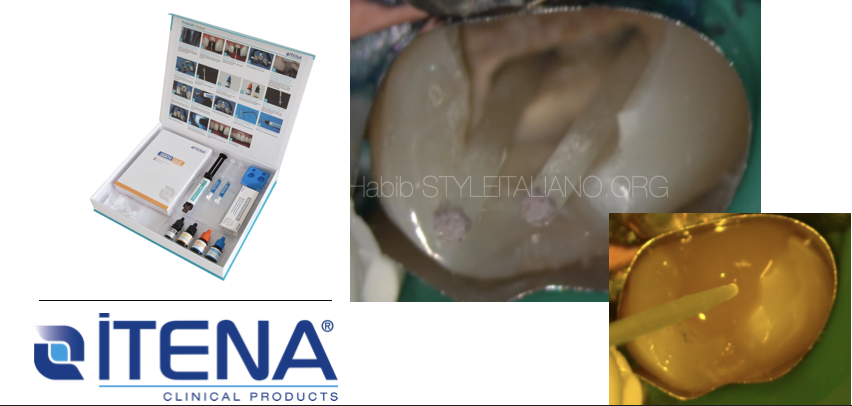
Post-Endo conservative fiber post build up
15/12/2022
Marc Habib
Warning: Undefined variable $post in /var/www/vhosts/styleitaliano-endodontics.org/endodontics.styleitaliano.org/wp-content/plugins/oxygen/component-framework/components/classes/code-block.class.php(133) : eval()'d code on line 2
Warning: Attempt to read property "ID" on null in /var/www/vhosts/styleitaliano-endodontics.org/endodontics.styleitaliano.org/wp-content/plugins/oxygen/component-framework/components/classes/code-block.class.php(133) : eval()'d code on line 2
Core build up using adhesive materials has become very popular due to many advantages of this technique.
Better aesthetics in the front region and better mechanical force distribution compared to metal posts are some of the advantages. Another enhancement would be the conservative preparation or even no post preparation for root canal treated teeth, where small calibre fiber post can be adjusted with minimum dentine loss preserving tooth resistance to fracture.
In the following clinical case, a maxillary second premolar presented with invading decays reaching the pulp chamber. The tooth was diagnosed with pulp necrosis needing root canal treatment. The preoperative xray revealed a 2 rooted premolar.
Special care was taken to preserve tooth structure as much as possible.
The purpose of this clinical Video is to highlight possible management of core build up of endodontically treated premolar teeth with ITENA Clinical Corono-Radicular Restoration Kit. It is important to highlight as well that small calibre Fiber Posts in different angulation helps achieving conservative mono block build up while preserving natural tooth structure.

Fig. 1
Preoperative X ray
Patient presented to the clinic with deep decays on the distal aspect of tooth 15 not visible clinically
Primary root canal treatment is scheduled

Fig. 2
Treatment planing to restore this maxillary first premolar includes first a root canal retreatment.
X-rays during RC treatment: Master cones and Post operative down pack Xrays taken the day of the treatment.
Video of the procedure

Fig. 3
Post Operative Xrays taken after core build up with 2 purple Dentoclic fiber post 1mm in diameter.
Patient was referred after for crown preparation.
Conclusions
In summary, Itena Clinical resin core build up kit is user friendly and with great working time before setting allowing an easy and hustle free build up. One millimeter diameter fiber posts can provide excellent restoration results with conservative build ups without any extra enlargement. Adequate steps for dentine or enamel preparation before and during bonding should be carried out for optimum result. Moreover, like in this case post were convergent in direction to the access cavity hence preserving more healthy dentine tissue. Finally, the clinician should respect all stages of the adhesive techniques taking special care for the time frame during etching and bonding of the tooth structures.
Bibliography
Bhuva B, Giovarruscio M, Rahim N, Bitter K, Mannocci F. The restoration of root filled teeth: a review of the clinical literature. Int Endod J. 2021 Apr;54(4):509-535. doi: 10.1111/iej.13438. Epub 2021 Jan 5. PMID:33128279.
Figueiredo FE, Martins-Filho PR, Faria-E-Silva AL. Do metal post-retained restorations result in more root fractures than fiber post-retained restorations? A systematic review and meta-analysis. J Endod. 2015 Mar;41(3):309-16. doi: 10.1016/j.joen.2014.10.006. Epub 2014 Nov 11. PMID: 25459568.
Tay, F. R., & Pashley, D. H. (2007). Monoblocks in Root Canals: A Hypothetical or a Tangible Goal. Journal of Endodontics, 33(4), 391–398. doi:10.1016/j.joen.2006.10.00
Scotti, N., Forniglia, A., Bergantin, E., Paolino, D. S., Pasqualini, D., & Berutti, E. (2013). Fibre post adaptation and bond strength in oval canals. International Endodontic Journal, 47(4), 366–372. doi:10.1111/iej.12156
Dietschi D, Duc O, Krejci I, Sadan A. Biomechanical considerations for the restoration of endodontically treated teeth: a systematic review of the literature. Part II: evaluation of fatigue behavior, interfaces, andin vivo studies. Quintessence Int 2008;39:117—29.






